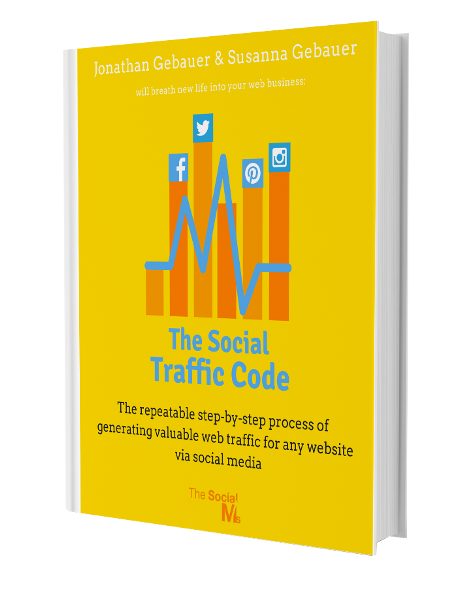The following is a guest post by Diana Beyer. Diana Beyer is experienced and self-driven media expert who is passionate about writing. Her purpose is to share values amid those interested. She is always seeking to discover new ways for personal and professional growth. Connect with Diana through Twitter.
If you still don’t believe that adding visuals to your website or blog content can increase your readers’ engagement, you should take some time reading the stats available on the matter.
Considering that this topic has been a focus of research for both scientific and marketing studies, there is plenty of data out there proving that images, videos, animated gifs, and anything else that can bring visual elements to your text will help you to build a stronger connection with your audience.
But how do you do it? This is what you will find answered below, so you can start applying it to your content from now on.
Before you read on - we have various resources that show you exactly how to use social networks to gain massive traffic and leads. For instance, check out the following:
FREE Step-by-Step Twitter Marketing GuideFREE Pinterest Marketing Ebook
Get to know your audience first
You might be tired of reading about it, but it is never enough to repeat it again. Before you start anything regarding your website or blog, you have to spend some time understanding your audience first. And if you are going to introduce any new tactic, later on, you will have to look into it again.
This becomes crucial as nothing is only black or white when it comes to marketing strategies. You can’t say that something will work for your audience just because it worked for the majority.
So, make sure that you understand a few things before adding visual elements to your website or blog:
- How does your audience deal with visual elements?
- How many elements will be enough?
- Which kind of elements would attract them?
- Do they have favorite colors, etc.?
- Would visuals work on their own, or would they have a better effect when accompanied by auditory elements (in other words, would videos work better than photos)?
As you may imagine, you will have to analyze your audience to understand how they perceive, capture, and process information. And the best way to do it is by trying to figure out what their learning style is.
The VAK model: Visual, Auditory, or Kinaesthetic
According to some theorists, each person has a sense through which they learn best. That means, there are three learning modalities: visual, auditory, or kinaesthetic.
So what you will need to do here is to understand in which modality your audience is more likely to fit in, so you can choose the visual elements that you will add more wisely.
- A visual audience will be happy with static elements only. They will be attracted by pictures, shapes, and lines that are expressive enough to bring up memories of pleasant times.

- An auditory audience will require that you add sound to your visual elements, being podcast’s natural fans. If this is your audience, you will get them engaged by adding music, or any other sound to your visual element. Videos will work well with them, but they don’t need to be as complex as for our next group.
- A kinaesthetic audience, on the other hand, expects to be stimulated by several senses at the same time. To get their attention, you will have to add gestures and other body movements to your visual elements, for example. That is to say that a photo might not be enough, and that animated gifs or videos that provide stronger experiences will be more successful with them.
Yes, it is understandable if you believe that we all are kinaesthetic, but this is an easy mistake to make. What you have to take into consideration here is what your audience feels about your text, not necessarily what the majority does.
Some people just don’t have the patience to watch videos, or find animated gifs childish and annoying. Others will turn off any sound as soon as they start. You would be wasting your money on creating and publishing these elements on your website or blog if your audience falls into any of the descriptions above.
So, first of all, try to find out what would work for your audience before putting any energy or your budget on new visual elements.
Hey, before you read on - we have in various FREE in-depth guides on similar topics that you can download. For this post, check out:
FREE workbook: CREATE AWESOME BLOG POSTSFREE Beginner's Guide: START A BLOG
But how do you verify it to be sure? Well, you will have to test it.
Test your visual elements before and after publishing themselves
As you probably don’t have a crystal ball, the only way you have at your disposal to verify if something will work or not is by testing it. And there are two ways to do it, one before you publish your visual elements and another after doing it.
Before you publish your visual elements, you can test them through a focus group. The same way that major brands call people in to introduce a new product and find out what they think about it, you can select a few people and ask them what they feel when presented with a couple of visual elements.
Of course, you might not have the budget or the expertise to pull off a 100% accurate research, but you still can come up with valuable information, just by asking your readers directly. You can, for example:
- Send them a survey through a newsletter – you can pick just a small sample, or distribute it to a larger audience.
- Add a link to your website or blog for your survey (with an engaging lead magnet to grab their attention)
- Write a post about the relation between visual elements and your topic of choice with a brilliant call-to-action in the end, asking your readers to comment and leave their opinion about their favourite visual elements there.
As you can see, there are ways to get the answers that you need in advance without having to spend loads of money on it.
If you have already published a few options regarding visual elements, you still can read reviews or conduct a survey to ask your audience what they think of what you are offering so far. Be prepared for criticism, but you will gather relevant information from it.
You can also try an A/B or a multivariate test, and check which elements have the best impact regarding readiness and traffic to your blog or website. This way you can find out the information you need without revealing to your audience what you are doing – what might lead to more honest results in the end.
The takeaway
 Increasing your readers’ engagement by adding visual elements has everything to do with understanding your audience’s needs and expectations.
Increasing your readers’ engagement by adding visual elements has everything to do with understanding your audience’s needs and expectations.
No matter what stats and experts can tell you about it, the truth is that many suggestions might not work for you at all depending on your target audience.
So the first thing that you have to do is stop making assumptions and put into practice tactics that will help you to know which visual elements will work best for your readers.
You can try surveys, newsletters, posts, and A/B or multivariate tests, depending on your expertise, time, and budget. The only important thing here is to be ready to listen to your audience’s opinions and to apply them the best way you can from now on.
Learn how to get more traffic, leads, and customers from social media: “The Social Traffic Code!”





